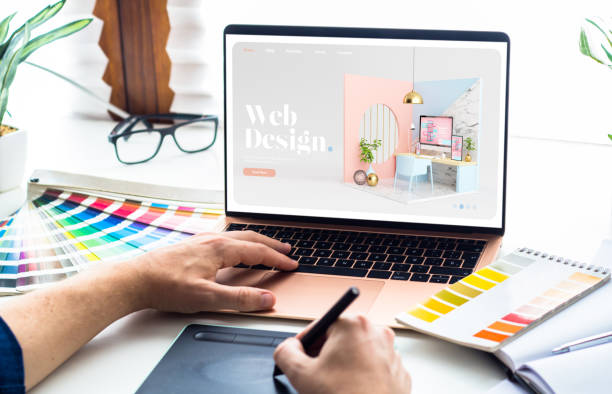Innovative Internet Style Solutions for Modern and Engaging Websites
In the realm of web design, the search of modern-day and appealing remedies has become increasingly essential for companies intending to record user interest. By incorporating vibrant shade schemes, interactive elements, and responsive layouts, developers can develop experiences that not only resonate with users but also boost brand name identity.
Accepting Vibrant Shade Plans
In website design, the critical usage of bold shade schemes can substantially boost individual engagement and brand name identification. By employing lively colors, designers can create visually striking websites that catch attention and foster a remarkable experience. An appropriate shade combination not only mirrors a business's values but also stimulates specific feelings that can affect individual behavior.
Vibrant colors can be used to guide customers' interest to essential aspects such as contact us to activity, enhancing conversion rates. For example, utilizing contrasting colors for switches and links can make these elements attract attention, motivating individuals to communicate more easily. A natural shade plan throughout the site enhances brand acknowledgment, developing a sense of knowledge and trust among site visitors.
However, it is critical to balance strong shades with adequate white area to stay clear of overwhelming individuals. Reliable use typography also complements vibrant shades, making sure readability while keeping aesthetic charm. Inevitably, embracing vibrant shade schemes in web layout not only raises visual top quality but likewise plays an indispensable role in accomplishing calculated service goals, making it a crucial factor to consider for contemporary internet growth.

Making Use Of Interactive Elements
Interactive components are vital in contemporary internet style, as they substantially enhance customer engagement and create an extra dynamic searching experience. By incorporating attributes such as computer animations, hover impacts, and clickable aspects, websites can motivate customers to explore content better and return for future check outs.

Micro-interactions, such as refined animations when a button is clicked or a form is submitted, can also boost the customer experience by giving prompt feedback. These small information can make the internet site really feel more responsive and alive, fostering a sense of link in between individuals and the site.
Furthermore, gamification components, such as benefits for completing certain actions, can encourage individuals to involve with the content a lot more deeply. By thoughtfully incorporating these interactive elements, web developers can create a memorable and engaging on the internet experience that resonates with users and urges them to return.
Executing Receptive Design
Implementing receptive design is critical in today's multi-device landscape, guaranteeing that sites give an ideal watching experience across numerous display sizes. see post As customers progressively access the internet with mobile phones, tablet computers, and desktop computers, a one-size-fits-all method is no more viable. Receptive layout enables for smooth navigating and interaction, adapting format and content to fit the gadget being utilized.
Trick concepts of responsive design include fluid grids, versatile photos, and media inquiries. Media inquiries help with the application of different styles based on the tool's qualities, such as width, height, or resolution, permitting developers to customize the user experience efficiently.
Furthermore, responsive style improves SEO performance, as online search engine favor mobile-friendly websites. By applying receptive layout, organizations not only improve individual fulfillment and interaction but also boost their reach in an affordable digital landscape. As innovation remains to evolve, taking on receptive style has become a basic practice for any type of Extra resources modern and engaging internet site.
Incorporating Multimedia Material
Multimedia content plays an essential duty in developing appealing and vibrant internet experiences that catch customers' interest and enhance understanding. By integrating text, photos, audio, and video, websites can provide a richer story that interest various discovering designs and preferences. This integration not just boosts individual engagement however also help in conveying complicated ideas succinctly.
Including top quality images and infographics can damage up textual content, making it more absorbable. Similarly, video tutorials and discussions can provide thorough insights that fixed content may not totally connect. Audio aspects, such as podcasts or history songs, can additionally enhance the atmosphere of a website, creating a much more immersive experience.
Moreover, the calculated usage of multimedia can enhance search engine optimization performance, as online search engine prefer diverse material kinds, enhancing exposure. It is crucial to guarantee that multimedia aspects do not impede page load times, as this can lead to user disappointment. By stabilizing multimedia assimilation with efficiency considerations, web designers can create aesthetically appealing anchor and practical sites that resonate with individuals, promoting a deeper connection and encouraging return sees.
Prioritizing User Experience

To achieve an optimal individual experience, developers have to focus on numerous key concepts. Clear telephone calls to action, readable typography, and organized material guide users, decreasing cognitive tons.
Furthermore, integrating user feedback into the style procedure is very useful. Normal testing with genuine individuals helps identify discomfort factors and areas for improvement, permitting repetitive improvements. Eventually, prioritizing UX not just boosts customer contentment however also drives interaction and conversion prices, making it an essential element of modern internet style techniques. By positioning customers at the facility of style efforts, sites can create long-term, positive impacts that motivate return check outs.
Verdict
Finally, modern website design solutions that highlight strong shade plans, interactive components, responsive layout, and multimedia content dramatically improve customer engagement and satisfaction. Focusing on user experience with clear layouts and continual feedback additionally adds to enhanced conversion prices. By adopting these methods, internet sites can efficiently mesmerize site visitors and enhance brand name identification, ultimately causing a much more vibrant and appealing online existence. The integration of these style concepts is important for accomplishing modern internet layout goals.